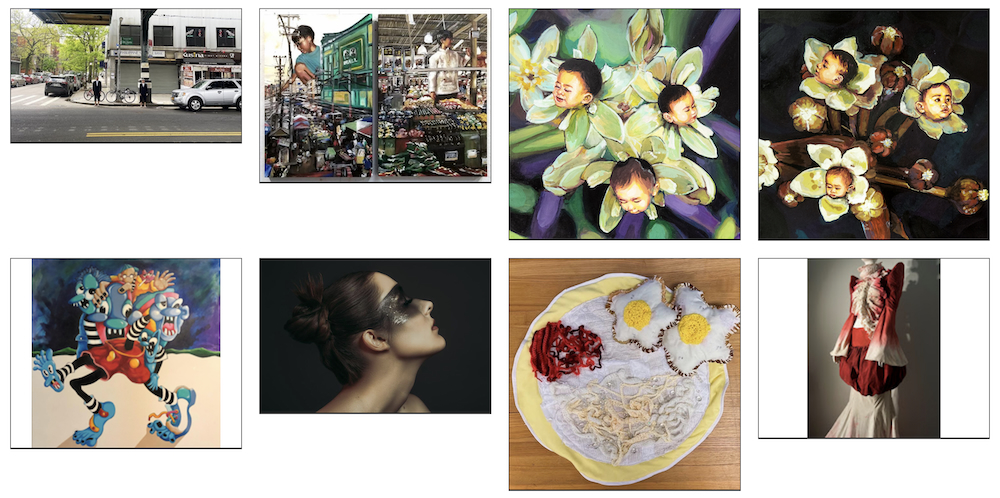‘More Than Lumpia’ exhibit aims to go beyond the stereotypes of the Fil-Am experience

Screenshot from “More Than Lumpia,” Epiphany Center for the Arts website
It’s safe to say that almost every Filipino has a soft spot for lumpia. In the hierarchy of Filipino ulam, the knee-jerk reaction would be placing it on either the S or A tier—who could resist a spectrum of home-y flavors in a delicate or crunchy spring roll?
Even famous singers like Filipino-American Olivia Rodrigo and Filipino-American-Mexican Jessica Sanchez enjoy the dish, making it one of their links to their heritage. Well, there’s even a new book about it.
Whenever foreigners fly to the Philippines, they also like raving about the country’s vast roster of food—aside from lumpia, sinigang, adobo, and lechon are common favorites. To the casual onlookers, cuisine would be the top-of-mind link to the Filipino experience. But undoubtedly, there’s more to the culture.
This ethos is at the core of “More Than Lumpia,” a new exhibit at The Catacombs Gallery at the Epiphany Center for the Arts in Chicago, Illinois. Running from Oct. 6 to Nov. 17, the event aims to amplify voices in the Filipino-American community through artistic talent.
According to the website of Epiphany Center for the Arts—which worked with Conde Art Project in making the exhibition happen—“More Than Lumpia” also targets to “challenge stereotypes, promote representation, and foster a more inclusive art community.”
View this post on Instagram
But aside from its obvious popularity, why does lumpia take the front seat of this initiative’s name? In an interview with Sasha-Ann Simons of Chicago radio station WBEZ, curator Cesar Conde reveals the thought process behind it: “Lumpia is one of my favorite [analogies] of what [being] Filipino-American is,” he starts, further mentioning that Filipinos were colonized by the Spaniards and white Americans.
“So the analogy of lumpia, it starts off with a very white wrapper. And in the middle of that are different mixtures of meats, spices, all that makes it truly special. You fold the lumpia wrapper—the white wrapper, [and] you deep-fry it. Thus, creating this beautiful texture. Complex.” He adds that it’s rich in flavor, like the diverse Filipino culture. “We’re just more than lumpia.”
Stressing on the multifaceted aspects, this gathering of creativity highlights conversations on the “diaspora, identity, assimilation, intergenerational relationships, memory, queerness, and the intersectionality of being Filipino-American,” infusing personal tales, history, and socio-cultural issues that surround the Fil-Am identity—just in time for Filipino-American History Month.
View this post on Instagram
In the WBEZ interview, Conde also mentioned that they had a nationwide open call and picked the best from the roster, taking into account “eagerness, expression, and willingness to express their ‘Filipino-ness.’”
In fact, you can take a peek into the collection online. There are oil paintings, mixed media, embroidered Good Morning towels, and watercolor works, among others. There are also ones that depict major issues like racism (Victoria-Riza Hyde’s “Portrait of a Filipina-American”) and martial law (Victor Barnuevo Velasco’s “Soledad y Otros Demonios, una historia inconclusa” and Bong Redila’s “13th Tarot”).

